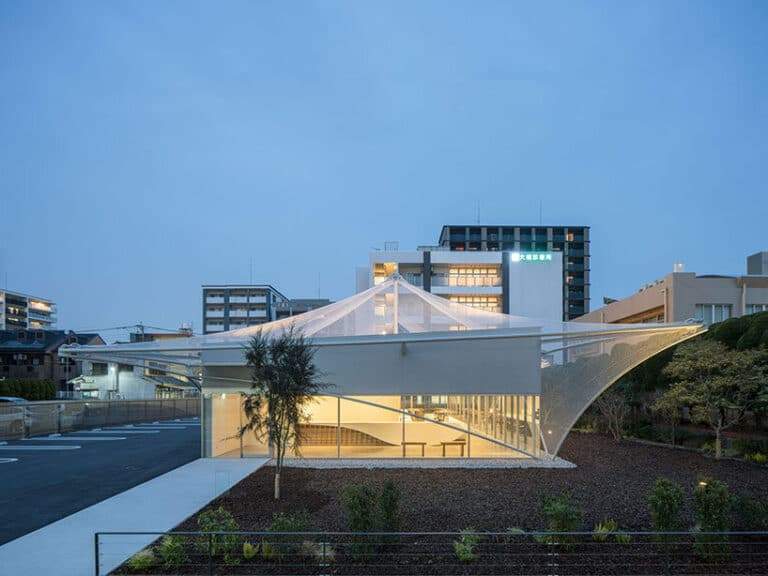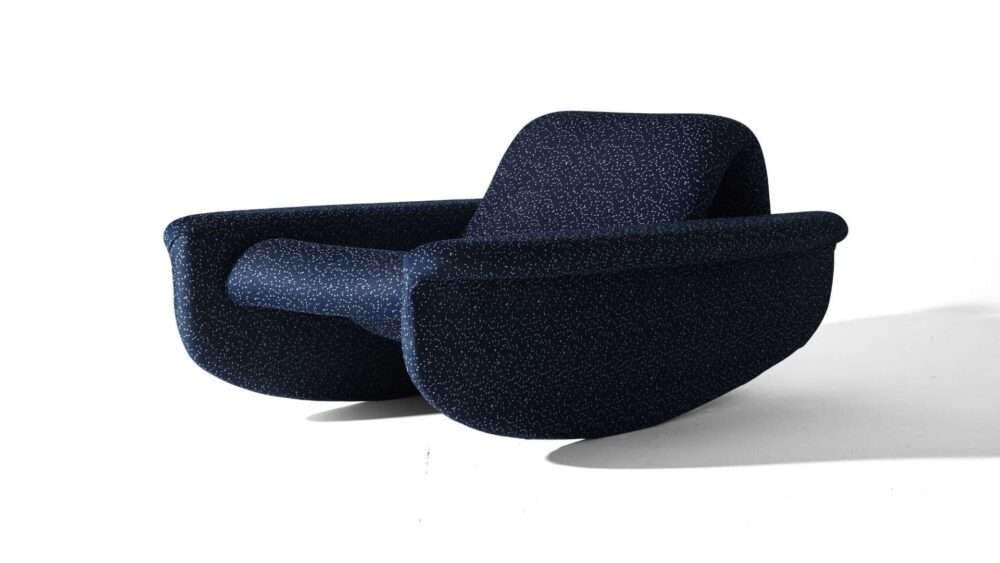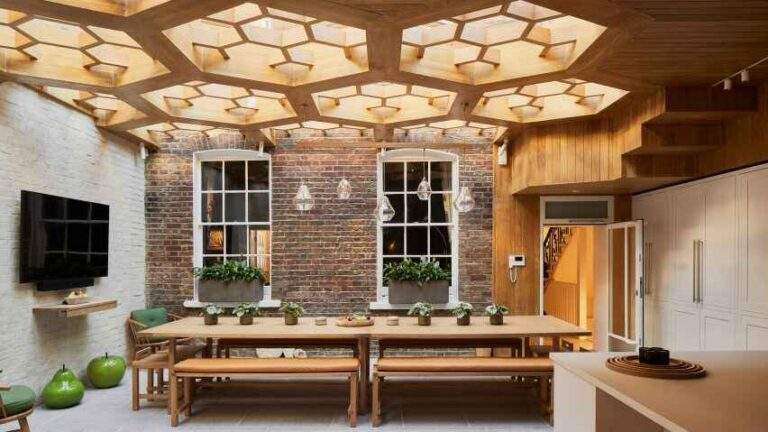Modern Architecture: Blending Precision and Chaos through Nature and Technology
Introduction
Modern architectural design is redefining the relationship between built environments and nature by combining organic forms with advanced technology. This article explores the concept of “dynamic architecture,” which relies on curves, folds, and waves to create unconventional spaces, often using materials like slate shingles to blur the boundaries between ground and roof. We will also examine the role of artificial intelligence in developing these designs and discuss how architects balance precision with unpredictability in contemporary structures.

1. The Concept of Dynamic Architecture: Buildings that Resemble Fabric
Modern designs are moving away from rigid straight lines toward fluid shapes that mimic folded or curved fabric. These forms create unexpected pathways and dramatic spaces, reflecting a dynamic interaction between structure and environment. For instance, wavy roofs can reflect wind movement or changes in light, giving buildings an interactive quality with their surroundings.
“Dynamic architecture is not just about aesthetics; it’s a language of communication between humans and space.”
— Journal of Sustainable Architecture (Source: World Green Building Council ).
This approach transforms static buildings into living systems that evolve with their environment, offering a new way to experience space.
2. Slate Shingles: Beauty Meets Functionality and Environmental Integration
Slate shingles play a key role in these designs, installed in wavy patterns to mimic natural terrains. This technique not only enhances visual appeal but also improves the building’s environmental performance:
| Function | Practical Application |
|---|---|
| Thermal and Water Insulation | Overlapping shingles reduce heat loss |
| Environmental Blend | Roofs resemble soil or rocks |
| High Durability | Resistant to weathering and corrosion |
The use of slate shingles ensures both functionality and aesthetic harmony, making them ideal for dynamic architectural projects.

3. Technology as a Creative Partner: The Role of Artificial Intelligence
Platforms like FORMAS.AI have become essential tools in designing complex shapes. Using algorithms, thousands of geometric possibilities can be analyzed to create designs that balance precision with controlled chaos. For example, computational models simulate how wind interacts with wavy surfaces to ensure structural integrity without compromising beauty.
“Artificial intelligence does not replace architects; it expands their creative horizons.”
— Report from the Architectural Technology Organization (Source: Institution of Engineering and Technology ).
AI allows designers to push boundaries while maintaining practicality, ensuring that innovative ideas translate into functional buildings.
4. Balancing Control and Chaos: The Philosophy of Modern Design
Dynamic architecture operates on the principle of “controlled chaos.” While elements are meticulously designed using technology, some details are left to interact with external factors like light and movement. This approach creates buildings that feel “alive,” with features that change as the environment shifts.
For example, a roof designed with wavy patterns may cast shadows differently throughout the day, creating a constantly evolving visual experience. This philosophy challenges traditional notions of static architecture, offering a more fluid and adaptive approach.

Frequently Asked Questions (FAQ)
Q: Are these designs practical to build, or are they just theoretical concepts?
A: These designs are feasible using available materials and tested technologies, such as slate shingles and reinforced concrete.
Q: Can these ideas be applied to small-scale projects?
A: Yes, modern technologies allow these designs to be adapted to various scales, from large complexes to smaller structures.
Q: What is the biggest challenge in this type of architecture?
A: The main challenge is balancing the high cost of specialized materials with achieving environmental efficiency.

Summary Table
| Element | Details |
|---|---|
| Main Idea | Combining organic forms with technology |
| Materials Used | Slate shingles, reinforced concrete |
| Challenges | High costs, construction complexity |
| Advantages | Environmental efficiency, unique aesthetics, interaction with surroundings |
Conclusion
Dynamic architecture is not merely a stylistic revolution but a rediscovery of the relationship between humans and space. By blending nature and technology, these designs offer a vision for the future where buildings become active parts of the ecosystem rather than static structures. This approach highlights the potential for architecture to evolve alongside environmental and technological advancements, creating spaces that are both functional and inspiring.







